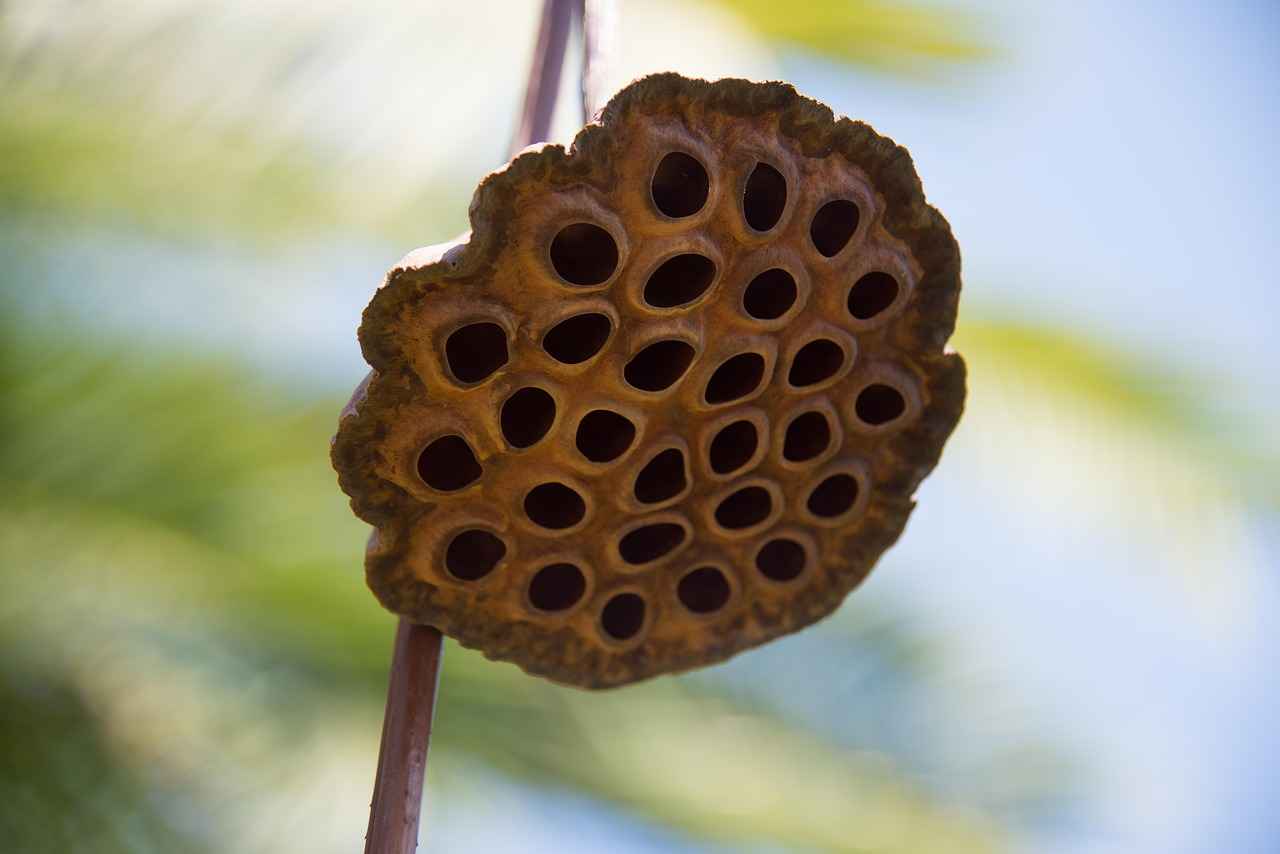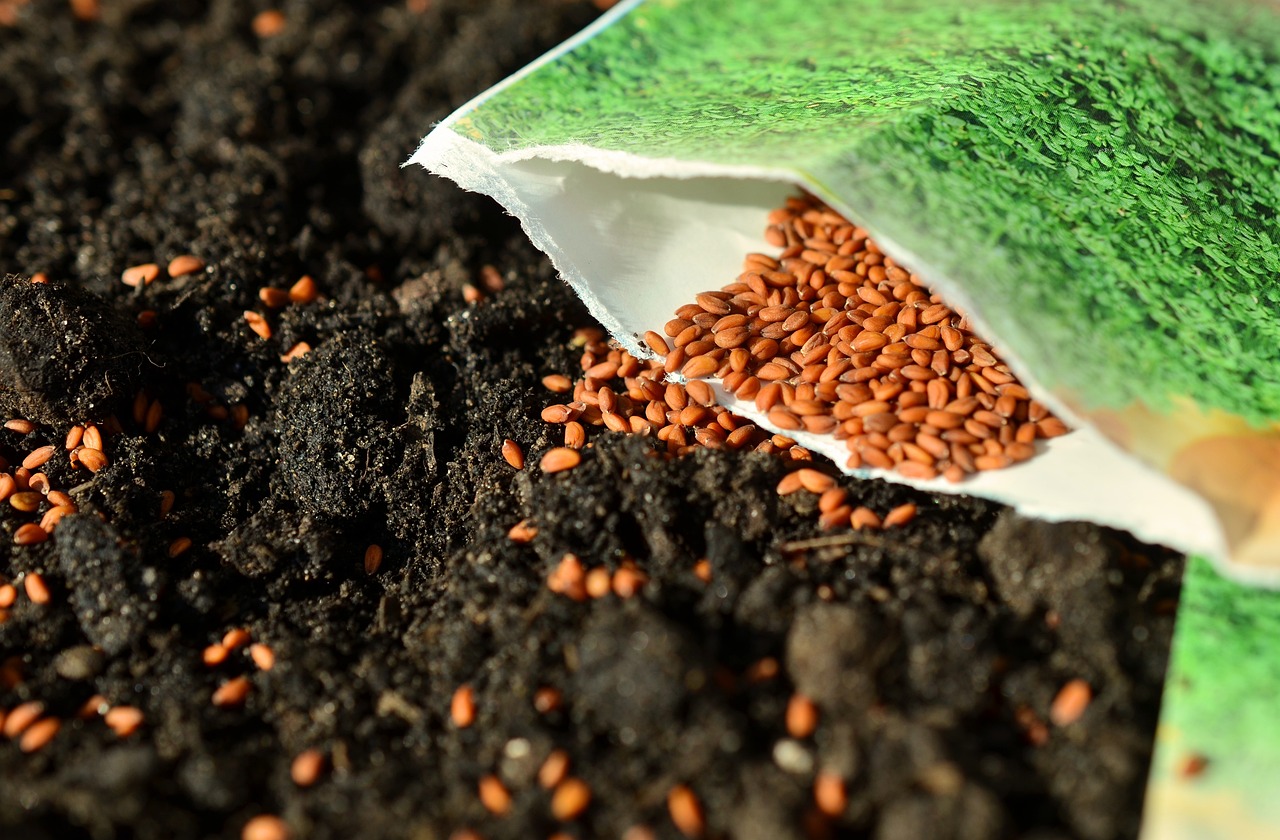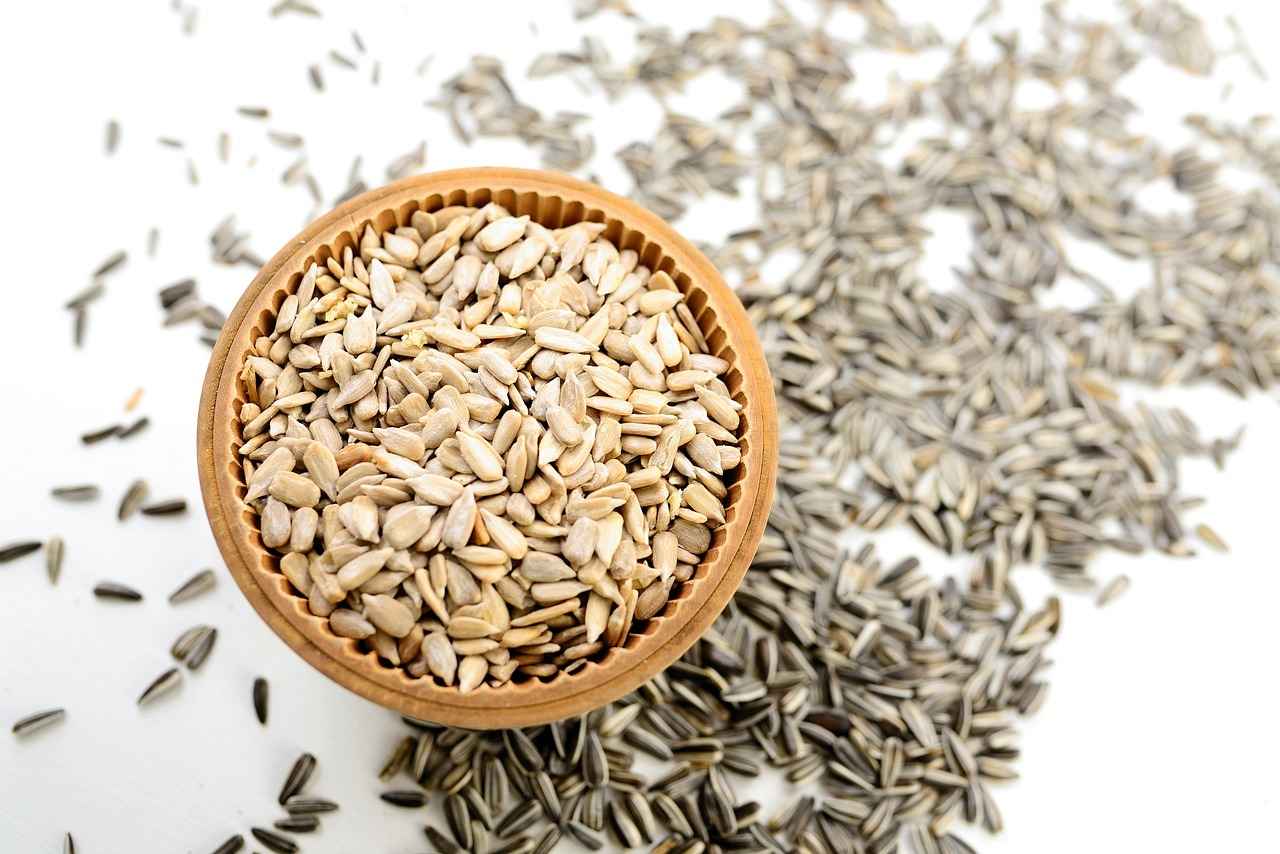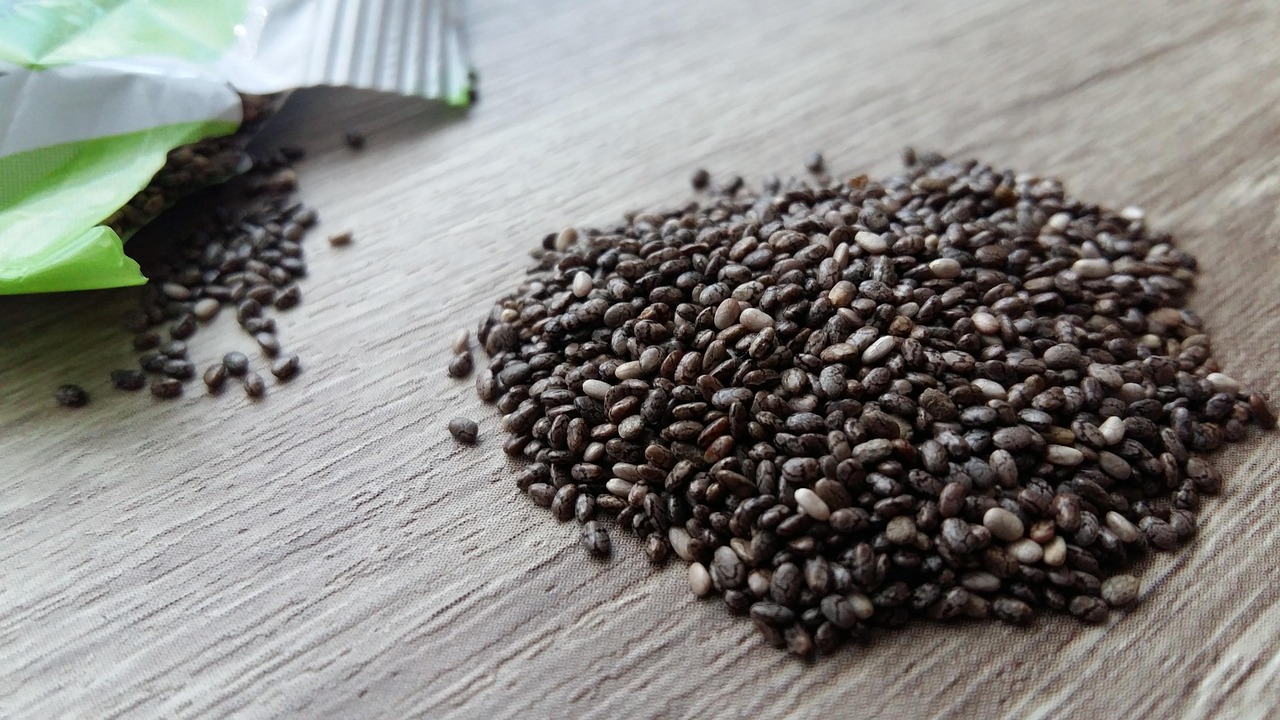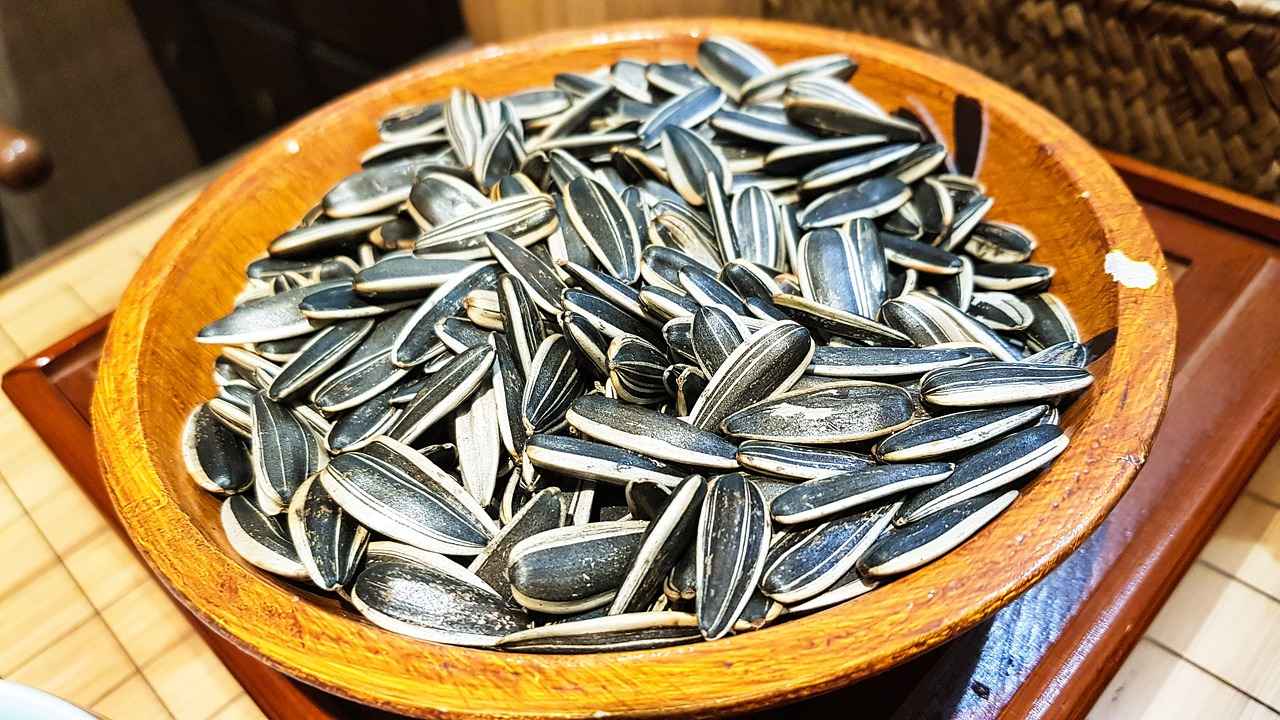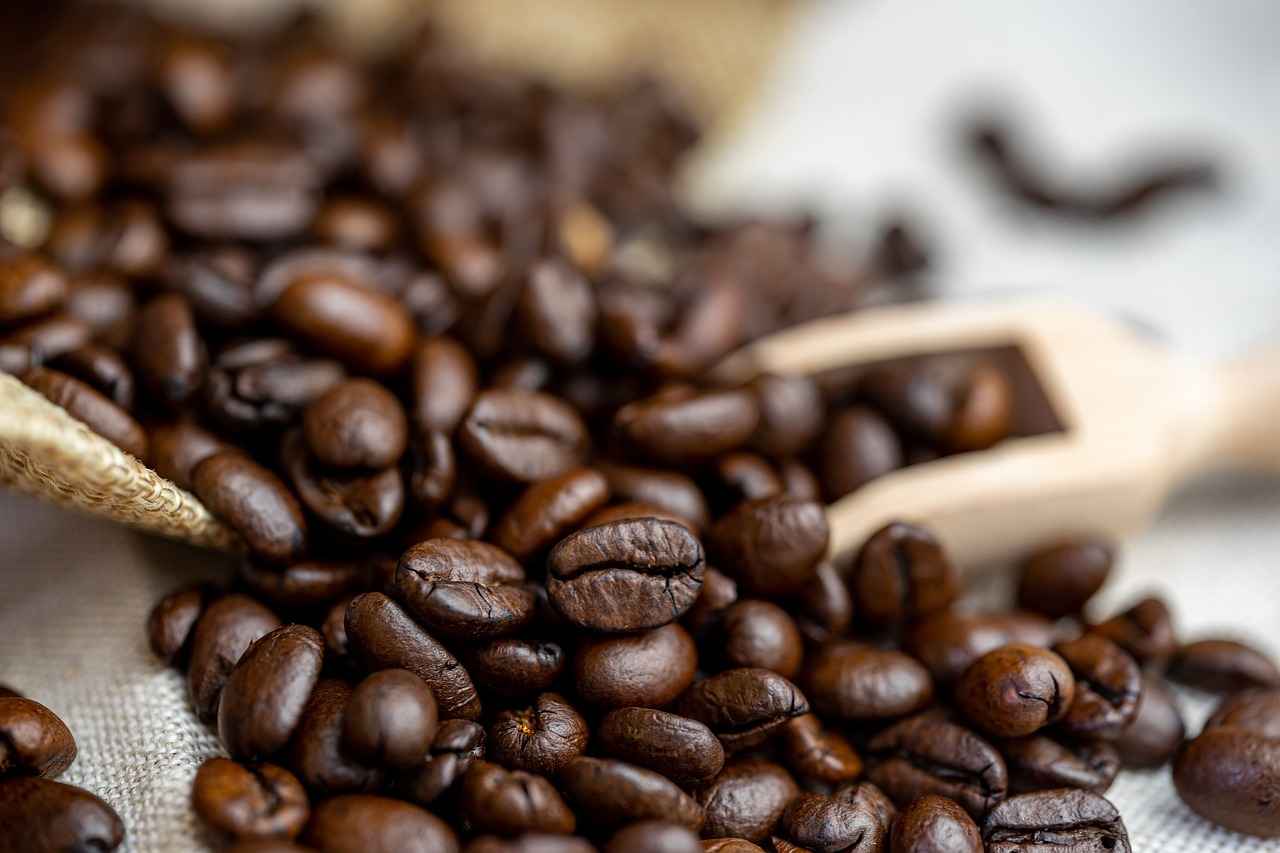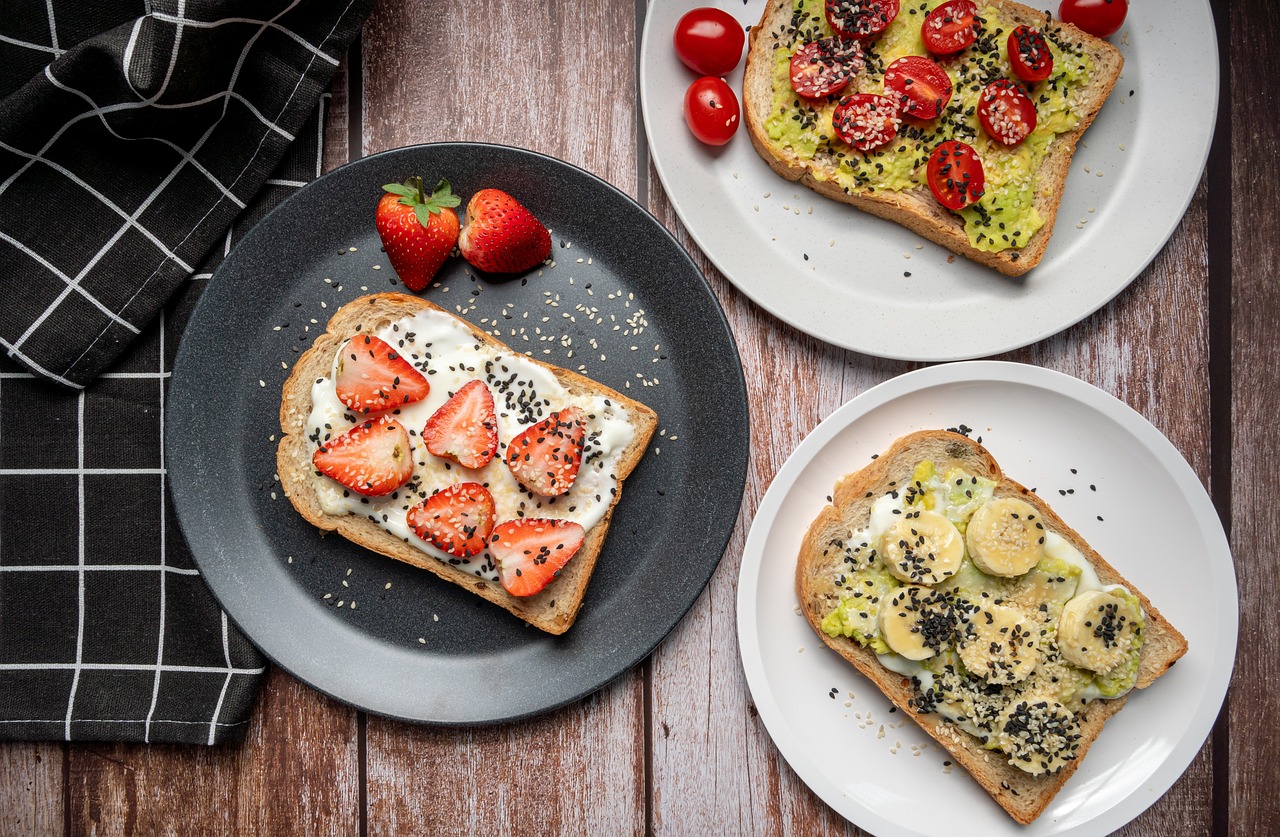Chia seeds have gained immense popularity as a superfood, particularly in the realm of weight loss. This article delves into the myriad benefits of chia seeds, highlighting their impressive nutritional profile, health advantages, and practical methods to seamlessly incorporate them into your daily diet.
Chia seeds are tiny, nutrient-dense seeds derived from the Salvia hispanica plant. These seeds are rich in essential nutrients such as fiber, protein, and omega-3 fatty acids, making them a favored option among health-conscious individuals.
Chia seeds play a significant role in promoting weight loss through various mechanisms:
- Enhancing Satiety: The high fiber content in chia seeds helps you feel full for extended periods, reducing overall calorie intake.
- Reducing Appetite: Their unique gel-forming ability when mixed with liquids can curb hunger pangs.
- Nutrient Density: Chia seeds are packed with vital nutrients, ensuring your body receives the necessary elements while managing weight.
Understanding the nutritional profile of chia seeds can illuminate their health benefits:
- Omega-3 Fatty Acids: Chia seeds are among the richest plant sources of omega-3s, known for supporting heart health and reducing inflammation.
- Antioxidants: These compounds help combat oxidative stress, enhancing metabolic processes essential for weight loss.
- Vitamins and Minerals: Chia seeds provide essential nutrients like calcium, magnesium, and phosphorus, contributing to overall health.
Integrating chia seeds into your meals is both simple and versatile. Here are some practical suggestions:
- Chia Seed Pudding: Combine chia seeds with milk or a milk alternative and let them soak overnight for a nutritious breakfast or snack.
- In Smoothies: Add chia seeds to your favorite smoothies for an extra nutrient boost and a thicker consistency.
- Baking: Incorporate chia seeds into baked goods like muffins or bread for added fiber and nutrition.
While chia seeds are generally safe for most individuals, some may experience mild digestive issues:
- Digestive Discomfort: Introducing chia seeds gradually into your diet can help prevent bloating or gas.
- Allergic Reactions: Though rare, some people may have allergies to chia seeds; consult a healthcare professional if you experience adverse symptoms.
The optimal amount of chia seeds for daily consumption is typically 1-2 tablespoons. This serving size provides a healthy balance of nutrients without excessive calories. Adjust your intake based on your activity level to meet your nutritional needs.
Finding high-quality chia seeds is crucial for maximizing their health benefits. They can be purchased at health food stores, supermarkets, or online. When shopping, consider:
- Organic Options: Choosing organic chia seeds ensures a product free from pesticides and harmful chemicals.
- Reputable Brands: Research and read reviews to find trustworthy brands that offer high-quality chia seeds.
In conclusion, chia seeds are a versatile and nutrient-dense superfood that can significantly support your weight loss journey. By understanding their benefits and incorporating them into your diet, you can enhance your overall health and well-being.

What Are Chia Seeds?
Chia seeds have gained immense popularity in recent years, and for good reason. These tiny, nutrient-dense seeds come from the Salvia hispanica plant, which is native to Central America. They are celebrated not only for their remarkable health benefits but also for their versatility in various culinary applications.
Rich in essential nutrients, chia seeds are an excellent source of fiber, protein, and omega-3 fatty acids. Just a small serving can provide a wealth of health benefits, making them a staple for health enthusiasts and those looking to improve their diet.
Chia seeds are often referred to as a superfood due to their impressive nutritional profile. Here’s a breakdown of what makes them so beneficial:
- High Fiber Content: Chia seeds are loaded with fiber, which aids digestion and helps maintain a healthy gut.
- Plant-Based Protein: They provide a good amount of protein, essential for muscle repair and growth.
- Omega-3 Fatty Acids: These healthy fats support heart health and reduce inflammation.
- Antioxidants: Chia seeds contain antioxidants that combat oxidative stress and support overall health.
- Vitamins and Minerals: They are rich in calcium, magnesium, and phosphorus, contributing to bone health.
Incorporating chia seeds into your diet can offer numerous health benefits:
- Weight Management: The high fiber content promotes feelings of fullness, which can help control appetite and reduce calorie intake.
- Heart Health: Omega-3 fatty acids in chia seeds can help lower cholesterol levels and maintain cardiovascular health.
- Bone Strength: The calcium and phosphorus in chia seeds support bone density and strength.
- Blood Sugar Control: Chia seeds may help regulate blood sugar levels, making them beneficial for those with diabetes.
Incorporating chia seeds into your meals is simple and can be done in various ways:
- Chia Seed Pudding: Combine chia seeds with your choice of milk and allow them to soak overnight for a delicious breakfast option.
- Smoothies: Add a tablespoon of chia seeds to your smoothies for an extra nutrient boost.
- Salads: Sprinkle chia seeds on salads for added crunch and nutrition.
- Baking: Incorporate chia seeds into baked goods like muffins or bread for added fiber and nutrients.
While chia seeds are generally safe for most individuals, it’s important to consume them in moderation:
- Digestive Issues: Some people may experience bloating or gas, especially if they are not accustomed to high-fiber foods. Start with small amounts and gradually increase.
- Allergic Reactions: Though rare, some individuals may be allergic to chia seeds. If you experience any adverse reactions, consult a healthcare professional.
In conclusion, chia seeds are a powerful addition to any diet, offering a wide range of health benefits. Their nutrient-rich profile and versatility make them an excellent choice for anyone looking to enhance their overall well-being.

How Do Chia Seeds Aid Weight Loss?
Chia seeds have gained significant attention in the health and wellness community, particularly for their potential to aid in weight loss. These tiny seeds are not only versatile in the kitchen but also packed with nutrients that can help you manage your weight effectively. In this article, we will delve into how chia seeds can support your weight loss journey by enhancing satiety, reducing appetite, and providing essential nutrients.
Chia seeds can promote weight loss through several mechanisms, making them an effective tool for those looking to shed extra pounds. Their unique properties contribute to feelings of fullness and help regulate appetite.
One of the most significant advantages of chia seeds is their high fiber content. A single ounce of chia seeds contains approximately 11 grams of fiber. This fiber expands in your stomach when mixed with liquid, creating a gel-like substance that can keep you feeling full for longer periods. By enhancing satiety, chia seeds can help reduce overall caloric intake, making it easier to stick to a weight loss plan.
Chia seeds may also influence hormones related to appetite regulation. Studies suggest that consuming fiber-rich foods like chia seeds can lead to increased levels of satiety hormones, such as GLP-1. This hormone signals to your brain that you are full, thereby reducing the likelihood of overeating and snacking between meals.
In addition to fiber, chia seeds are a remarkable source of plant-based protein. Protein is essential for muscle maintenance and can increase feelings of fullness. Including chia seeds in your diet can help you meet your protein needs while also supporting your weight loss goals.
Chia seeds are rich in omega-3 fatty acids, which are known for their numerous health benefits, including supporting heart health and reducing inflammation. These healthy fats can also play a role in weight management by promoting a feeling of fullness and satisfaction after meals, which can help curb unnecessary snacking.
Chia seeds are packed with antioxidants that combat oxidative stress in the body. This stress can hinder metabolic processes, making it more challenging to lose weight. By incorporating chia seeds into your diet, you can enhance your overall metabolism and support your weight loss efforts.
- Chia Seed Pudding: Combine chia seeds with your choice of milk or yogurt, let them soak overnight, and enjoy a nutritious breakfast or snack.
- Smoothies: Add chia seeds to your favorite smoothie recipes for an extra nutrient boost and a thicker texture.
- Baking: Incorporate chia seeds into baked goods like muffins or bread for added fiber and nutrition.
For most individuals, a daily intake of 1-2 tablespoons of chia seeds is sufficient to reap their health benefits. However, it’s essential to listen to your body and adjust your intake based on your individual needs and activity levels.
While chia seeds are generally safe for most people, some may experience digestive issues, especially if they are not used to consuming high-fiber foods. It’s advisable to start with small amounts and gradually increase your intake while ensuring adequate hydration.
In summary, chia seeds can be a powerful ally in your weight loss journey. Their ability to enhance satiety, regulate appetite, and provide essential nutrients makes them a valuable addition to a balanced diet. By incorporating chia seeds into your meals, you can enjoy their numerous health benefits while effectively managing your weight.
High Fiber Content
The in chia seeds is one of the key factors that contribute to their effectiveness in promoting weight loss. Fiber plays a crucial role in maintaining a healthy digestive system and regulating appetite. When you consume foods rich in fiber, such as chia seeds, your body experiences a prolonged feeling of fullness, which can significantly reduce overall calorie intake.
Chia seeds contain both soluble and insoluble fiber. The soluble fiber absorbs water and forms a gel-like substance in the stomach. This not only slows down digestion but also helps to stabilize blood sugar levels, preventing spikes that can lead to cravings and overeating. On the other hand, insoluble fiber adds bulk to your stool and aids in regular bowel movements, promoting overall gut health.
By incorporating chia seeds into your diet, you can effectively manage your hunger levels. Studies have shown that fiber-rich foods can influence the release of hormones that signal satiety, such as peptide YY and glucagon-like peptide-1. These hormones help to curb your appetite, making it easier to resist unhealthy snacks and large portions during meals.
Moreover, the fiber in chia seeds is beneficial for maintaining a healthy gut microbiome. A well-balanced gut microbiome is essential for optimal digestion and can influence weight management. Research indicates that a diverse range of gut bacteria can enhance metabolic processes, further supporting weight loss efforts.
In addition to its appetite-suppressing qualities, the fiber in chia seeds can help to regulate cholesterol levels and improve heart health. By lowering LDL cholesterol and increasing HDL cholesterol, chia seeds contribute to overall cardiovascular wellness, which is crucial for those looking to lose weight.
For those looking to incorporate chia seeds into their diet, consider adding them to smoothies, yogurt, or oatmeal. You can also create delicious chia seed puddings by mixing the seeds with milk or a milk alternative, allowing them to soak overnight. This not only enhances the flavor but also maximizes their nutritional benefits.
In summary, the in chia seeds is a powerful ally in the quest for weight loss. By enhancing satiety, regulating appetite, and supporting digestive health, chia seeds can help you achieve your weight management goals while providing essential nutrients. Remember to stay hydrated when increasing your fiber intake, as this will help your body adjust more effectively.
Soluble vs. Insoluble Fiber
Understanding the Role of Fiber in Chia Seeds
Chia seeds are often hailed as a superfood due to their impressive nutritional profile. Among their many benefits, the presence of both soluble and insoluble fiber stands out as a key factor in promoting digestive health and aiding in weight management. In this section, we will delve into the differences between these two types of fiber and their respective roles in enhancing overall health.
Soluble fiber dissolves in water to form a gel-like substance in the digestive tract. This property allows it to help regulate blood sugar levels by slowing down the absorption of sugar, which can be particularly beneficial for those managing diabetes. Additionally, soluble fiber can lower cholesterol levels by binding to cholesterol in the digestive system and facilitating its excretion.
In contrast, insoluble fiber does not dissolve in water. It adds bulk to the stool and helps food pass more quickly through the stomach and intestines. This type of fiber is crucial for maintaining a healthy digestive system, as it can prevent constipation and promote regular bowel movements.
The combination of soluble and insoluble fiber in chia seeds creates a synergistic effect that supports digestive health. While soluble fiber aids in nutrient absorption and cholesterol management, insoluble fiber ensures that the digestive system functions smoothly. This dual action can contribute to a healthier gut microbiome, which is essential for overall health.
- Improved Digestion: Regular consumption of fiber helps maintain a healthy gut, reducing the risk of digestive disorders.
- Weight Management: High-fiber foods like chia seeds promote a feeling of fullness, which can help control appetite and reduce calorie intake.
- Heart Health: Fiber can lower cholesterol levels and improve heart health, reducing the risk of cardiovascular diseases.
Incorporating chia seeds into your daily meals is simple and can enhance your fiber intake significantly. Here are some practical suggestions:
- Chia Seed Pudding: Mix chia seeds with your choice of milk and let them sit overnight for a delicious breakfast.
- Smoothies: Add a tablespoon of chia seeds to your smoothie for an extra nutrient boost.
- Baking: Incorporate chia seeds into baked goods like muffins or bread for added texture and nutrition.
While fiber is essential for health, consuming too much too quickly can lead to digestive discomfort. Symptoms may include:
- Bloating: Excess fiber can cause gas and bloating, particularly in those not accustomed to a high-fiber diet.
- Cramping: Rapid increases in fiber intake can lead to abdominal cramps.
To mitigate these effects, it is advisable to gradually increase fiber consumption while ensuring adequate hydration.
In summary, the combination of soluble and insoluble fiber in chia seeds plays a vital role in promoting digestive health and supporting weight management. By understanding the unique benefits of each type of fiber, you can make informed dietary choices that enhance your overall well-being.
Impact on Satiety Hormones
Understanding how chia seeds influence satiety hormones can be a game-changer for those looking to manage their weight effectively. Research indicates that foods high in fiber, such as chia seeds, can have a significant impact on hormones that regulate hunger and fullness. This section delves into the mechanisms through which chia seeds may help control appetite and promote feelings of satisfaction.
How Do Chia Seeds Affect Hunger Hormones?
Chia seeds are rich in soluble fiber, which forms a gel-like substance when mixed with water. This characteristic not only aids digestion but also plays a crucial role in appetite regulation. The gel expands in the stomach, leading to a prolonged feeling of fullness. As a result, individuals may find themselves eating less during subsequent meals, which can ultimately contribute to weight loss.
The Role of Ghrelin and Leptin
- Ghrelin: Often referred to as the “hunger hormone,” ghrelin signals the brain to stimulate appetite. Studies suggest that a diet rich in fiber can help lower ghrelin levels, leading to reduced hunger.
- Leptin: This hormone is responsible for signaling satiety to the brain. Increased fiber intake from chia seeds may enhance leptin sensitivity, making it easier for the body to recognize when it has had enough to eat.
Research Insights
Several studies have examined the effects of fiber on satiety hormones. For instance, a study published in the American Journal of Clinical Nutrition found that participants who consumed high-fiber foods, including chia seeds, reported lower levels of hunger and increased feelings of fullness compared to those on a low-fiber diet. This suggests that incorporating chia seeds into meals may help regulate hunger hormones effectively.
Practical Tips for Incorporating Chia Seeds
To maximize the benefits of chia seeds for appetite regulation, consider the following tips:
- Add chia seeds to your morning smoothie for a fiber-rich start to the day.
- Mix chia seeds into yogurt or oatmeal for a nutritious breakfast.
- Create chia seed pudding by soaking them in almond milk overnight, providing a satisfying snack or dessert.
Conclusion
Incorporating chia seeds into your diet may have a profound effect on your hunger hormones, leading to better appetite control and weight management. By understanding how these tiny seeds influence satiety, you can make informed dietary choices that support your health goals.
Protein and Weight Management
is a critical topic for anyone looking to maintain a healthy lifestyle. Chia seeds, often hailed as a superfood, are an excellent source of plant-based protein. This is particularly important for muscle maintenance, especially for those engaged in regular physical activity. But how exactly do these tiny seeds contribute to weight management?
Protein plays a vital role in weight management for several reasons:
- Increased Satiety: Consuming protein can enhance feelings of fullness, reducing overall calorie intake.
- Muscle Maintenance: During weight loss, it is crucial to preserve lean muscle mass. Protein supports this by providing the necessary building blocks.
- Higher Thermic Effect: Protein has a higher thermic effect compared to fats and carbohydrates, meaning your body burns more calories digesting it.
Chia seeds are particularly unique because they contain about 4 grams of protein per ounce, making them a great addition to a balanced diet. Their protein content, combined with their high fiber levels, creates a powerful duo that can help manage hunger and control cravings.
Chia seeds are not just about protein; they are also packed with fiber. This combination is essential for effective weight management:
- Fiber and Fullness: The soluble fiber in chia seeds expands in the stomach, leading to a feeling of fullness that can last for hours.
- Balanced Blood Sugar: Protein and fiber together help stabilize blood sugar levels, preventing spikes and crashes that can lead to overeating.
Integrating chia seeds into your meals is simple and can provide significant benefits:
- Chia Pudding: Mix chia seeds with your choice of milk or yogurt, let them sit overnight, and enjoy a nutritious breakfast.
- Smoothies: Add a tablespoon of chia seeds to your smoothie for an extra protein and fiber boost.
- Baking: Incorporate chia seeds into muffins, breads, or energy bars for added nutrition.
While chia seeds are generally safe, moderation is key. Overconsumption may lead to digestive discomfort due to their high fiber content. It is advisable to start with a small amount and gradually increase your intake.
The recommended daily intake of protein varies based on factors like age, sex, and physical activity level. Generally, adults should aim for 0.8 grams of protein per kilogram of body weight. For those looking to lose weight, increasing protein intake can be beneficial.
In conclusion, chia seeds serve as a remarkable source of plant-based protein that can significantly aid in weight management. Their ability to promote satiety, combined with their nutritional profile, makes them an excellent addition to any diet. By understanding how to effectively incorporate chia seeds into your meals, you can leverage their benefits for better health and weight control.

What Nutrients Are in Chia Seeds?
Chia seeds have gained immense popularity in the health and wellness community, and for good reason. These tiny seeds are not only versatile but also packed with essential nutrients that contribute to overall health. Understanding the nutritional profile of chia seeds can significantly enhance your appreciation for their numerous health benefits.
Chia seeds are a true superfood, brimming with a variety of nutrients that can support your health in multiple ways. Here’s a breakdown of their impressive nutritional profile:
- Omega-3 Fatty Acids: Chia seeds are one of the richest plant sources of omega-3 fatty acids. These essential fats are crucial for heart health, reducing inflammation, and supporting cognitive function.
- Fiber: Each serving of chia seeds contains a substantial amount of dietary fiber. This fiber aids digestion, promotes satiety, and helps regulate blood sugar levels, making it beneficial for weight management.
- Protein: Chia seeds provide a good source of plant-based protein, which is essential for muscle repair and growth. Including protein in your diet can also help keep you feeling full longer.
- Antioxidants: These seeds are rich in antioxidants that help combat oxidative stress in the body. Antioxidants play a vital role in reducing the risk of chronic diseases and promoting overall health.
- Vitamins and Minerals: Chia seeds are packed with essential vitamins and minerals, including calcium, magnesium, phosphorus, and manganese. These nutrients are vital for bone health, energy production, and metabolic functions.
The unique combination of nutrients in chia seeds offers various health benefits:
- Heart Health: The omega-3 fatty acids in chia seeds can help lower blood pressure and cholesterol levels, reducing the risk of heart disease.
- Weight Management: High fiber content aids in digestion and keeps you feeling full, which can help prevent overeating.
- Bone Strength: With a rich supply of calcium and magnesium, chia seeds contribute to maintaining strong bones and preventing osteoporosis.
- Improved Digestion: The soluble and insoluble fiber in chia seeds supports gut health by promoting regularity and preventing constipation.
Adding chia seeds to your meals is easy and can enhance the nutritional value of your dishes. Here are some practical tips:
- Chia Seed Puddings: Mix chia seeds with your choice of milk or yogurt and let them sit overnight for a delicious and nutritious breakfast.
- Smoothies: Blend chia seeds into your favorite smoothies to add a nutrient boost without altering the flavor.
- Baking: Incorporate chia seeds into baked goods like muffins or bread for added texture and nutrition.
In summary, chia seeds are a nutrient-dense food that can enhance your health and support weight management. By understanding their rich nutritional profile and the benefits they offer, you can make informed choices about incorporating them into your diet.
Omega-3 Fatty Acids
are essential fats that the body cannot produce on its own, making it crucial to obtain them through diet. Among various food sources, chia seeds stand out as one of the richest plant-based sources of these healthy fats. This article delves into the significance of omega-3 fatty acids, their benefits, and how chia seeds can play a pivotal role in your health and weight loss journey.
Omega-3 fatty acids are a type of polyunsaturated fat that is vital for numerous bodily functions. They are categorized into three main types:
- Ala (Alpha-linolenic acid): Found in plant sources like chia seeds, flaxseeds, and walnuts.
- Epa (Eicosapentaenoic acid): Primarily found in fish and seafood.
- Dha (Docosahexaenoic acid): Also found in fish, particularly fatty fish like salmon and mackerel.
Omega-3 fatty acids are renowned for their numerous health benefits, including:
- Heart Health: They help lower triglyceride levels, reduce blood pressure, and decrease the risk of heart disease.
- Anti-Inflammatory Properties: Omega-3s can help reduce inflammation in the body, which is linked to various chronic diseases.
- Brain Function: These fatty acids are crucial for brain health, supporting cognitive function and potentially reducing the risk of neurodegenerative diseases.
- Mood Regulation: Some studies suggest that omega-3s may help alleviate symptoms of depression and anxiety.
Chia seeds are an exceptional source of alpha-linolenic acid (ALA), the plant-based form of omega-3 fatty acids. Just two tablespoons of chia seeds provide approximately 5 grams of ALA, making it an easy addition to your diet.
Incorporating chia seeds into your meals not only boosts your omega-3 intake but also adds other essential nutrients such as fiber, protein, and antioxidants. This nutrient profile can further enhance your overall health and support weight management.
Adding chia seeds to your diet is simple and versatile. Here are some practical tips:
- Chia Seed Pudding: Mix chia seeds with your choice of milk or a milk alternative, add sweeteners or fruits, and let it sit overnight for a delicious breakfast.
- Smoothies: Blend chia seeds into your smoothies for an extra nutrient boost. They can help thicken the smoothie while providing healthy fats.
- Baking: Incorporate chia seeds into baked goods like muffins or bread for added nutrition.
- Salads and Soups: Sprinkle chia seeds on salads or stir them into soups for a nutritious crunch.
While omega-3 fatty acids are generally safe, excessive intake can lead to some side effects, such as:
- Digestive Issues: High amounts can cause gastrointestinal discomfort, including bloating or diarrhea.
- Blood Thinning: Omega-3s can have a blood-thinning effect, which may be a concern for individuals on anticoagulant medications.
The recommended daily intake of omega-3 fatty acids varies by age, gender, and health status. However, general guidelines suggest:
- Adults: Aim for at least 250-500 mg of combined EPA and DHA per day.
- Vegetarians and Vegans: Focus on ALA sources like chia seeds, flaxseeds, and walnuts, aiming for 1.1-1.6 grams of ALA daily.
In conclusion, incorporating chia seeds into your diet is an excellent way to enhance your omega-3 fatty acid intake. With their myriad of health benefits, chia seeds can support heart health, reduce inflammation, and contribute to overall well-being.
Antioxidants and Their Benefits
Chia seeds have gained recognition as a superfood due to their remarkable health benefits, particularly their high content of antioxidants. These tiny seeds are not just a trendy health food; they play a significant role in enhancing overall health and supporting weight loss efforts. In this section, we will explore the various benefits of antioxidants found in chia seeds and how they contribute to a healthier lifestyle.
Antioxidants are compounds that help protect the body from oxidative stress, a condition caused by an imbalance between free radicals and antioxidants in the body. Free radicals can damage cells, leading to chronic diseases and aging. By neutralizing these free radicals, antioxidants help maintain cellular health and reduce the risk of various health issues.
- Combatting Oxidative Stress: The antioxidants present in chia seeds, such as quercetin and chlorogenic acid, help combat oxidative stress in the body. This action can lead to improved cellular function and overall health.
- Supporting Metabolic Processes: Antioxidants enhance metabolic processes, which can help in managing weight. A well-functioning metabolism is crucial for burning calories efficiently.
- Reducing Inflammation: Chronic inflammation is linked to various health issues, including obesity. The anti-inflammatory properties of antioxidants in chia seeds can help reduce inflammation, potentially aiding weight loss.
- Improving Heart Health: Antioxidants contribute to heart health by reducing blood pressure and cholesterol levels. A healthy heart is essential for effective weight management and overall well-being.
Incorporating chia seeds into your diet can be an effective strategy for weight loss. The antioxidants in these seeds not only promote a healthy metabolism but also help regulate appetite. By reducing oxidative stress, chia seeds can enhance your body’s ability to burn fat, making it easier to achieve your weight loss goals.
To reap the benefits of antioxidants found in chia seeds, consider the following practical tips:
- Chia Seed Smoothies: Blend chia seeds into your morning smoothies for a nutrient boost. The antioxidants will enhance your drink’s health benefits while providing a satisfying texture.
- Chia Seed Pudding: Prepare a delicious chia seed pudding by soaking the seeds in almond milk or coconut milk overnight. This makes for a nutritious breakfast or snack packed with antioxidants.
- Baking with Chia Seeds: Incorporate chia seeds into your baked goods, such as muffins or bread, to add a nutritious twist and enhance the antioxidant content.
While chia seeds are generally safe for most individuals, it’s important to consume them in moderation. Some people may experience digestive discomfort, particularly if they are not accustomed to high-fiber foods. Always ensure you drink plenty of water when consuming chia seeds to help with digestion.
The antioxidants found in chia seeds play a crucial role in promoting overall health and supporting weight loss efforts. By incorporating these seeds into your diet, you can harness their numerous benefits, from combating oxidative stress to enhancing metabolic processes. Whether you enjoy them in smoothies, puddings, or baked goods, chia seeds are a versatile addition to a healthy lifestyle.

How to Incorporate Chia Seeds into Your Diet?
Incorporating chia seeds into your meals is not only simple but also incredibly versatile. These tiny seeds are a powerhouse of nutrition and can easily enhance your diet. Here are some practical and creative ways to enjoy the benefits of chia seeds while adding variety to your meals.
One of the most popular ways to enjoy chia seeds is by making chia seed pudding. This dish is incredibly easy to prepare and can be customized to suit your taste. To make chia seed pudding, simply mix 3 tablespoons of chia seeds with 1 cup of milk (dairy or plant-based) and let it sit in the refrigerator for a few hours or overnight. You can enhance the flavor by adding honey, vanilla extract, or cocoa powder. Top it with fresh fruits, nuts, or granola for added texture and nutrients.
Chia seeds can also be easily incorporated into your favorite smoothie recipes. Just add a tablespoon or two of chia seeds to your blender along with fruits, vegetables, and your choice of liquid. Not only do they add a nutritional boost, but they also help thicken the smoothie, giving it a creamy texture. This is an excellent way to increase your fiber and omega-3 intake while enjoying a delicious drink.
For a quick and healthy addition to your meals, consider sprinkling chia seeds on salads or grain bowls. They add a nice crunch and can complement various flavors. Just a tablespoon of chia seeds can enhance the nutritional profile of your meal without altering the taste significantly. Combine them with leafy greens, vegetables, and your favorite dressing for a satisfying dish.
Another fantastic way to incorporate chia seeds is by adding them to your baking recipes. You can mix chia seeds into muffins, bread, or cookies for added nutrition. They can also be used as an egg substitute; mix 1 tablespoon of chia seeds with 2.5 tablespoons of water, let it sit until it forms a gel-like consistency, and use it as you would an egg in your recipes.
For those who enjoy drinks, consider making a refreshing chia seed beverage. You can mix chia seeds with water, juice, or herbal tea. Allow the seeds to soak for about 10-15 minutes until they swell. This drink is not only hydrating but also provides a good source of nutrients. You can add lemon or lime juice for a zesty flavor.
Mixing chia seeds into yogurt is another easy method to enjoy their benefits. Simply stir in a tablespoon of chia seeds into your yogurt and let it sit for a few minutes. This will allow the seeds to absorb some moisture and create a more satisfying texture. You can top it with fruits, nuts, or a drizzle of honey for a delicious snack or breakfast.
If you enjoy making your own snacks, consider adding chia seeds to homemade energy bars. Combine oats, nut butter, honey, and chia seeds for a nutritious treat that’s perfect for on-the-go snacking. These bars are not only filling but also provide sustained energy, making them an ideal choice for athletes or busy individuals.
In summary, incorporating chia seeds into your diet is a straightforward and effective way to enhance your nutritional intake. With their versatility, you can easily add them to a variety of meals and snacks, making healthy eating both enjoyable and convenient.
Chia Seed Pudding Recipes
Chia seed pudding has gained immense popularity as a nutritious and versatile dish. This delightful concoction not only serves as a satisfying breakfast but also makes for a delicious snack or dessert. By combining chia seeds with various liquid bases, you can create a creamy, flavorful pudding that is both healthy and filling.
Chia seeds are rich in fiber, protein, and omega-3 fatty acids, making them an excellent choice for those looking to enhance their diet. When soaked in liquid, chia seeds expand and form a gel-like consistency, which contributes to the pudding’s unique texture. This property not only adds to the mouthfeel but also helps keep you feeling full for longer, aiding in weight management.
Creating chia seed pudding is remarkably simple. Here’s a basic recipe to get you started:
- Ingredients:
- 1/4 cup chia seeds
- 1 cup milk or milk alternative (almond, coconut, etc.)
- 1-2 tablespoons sweetener (honey, maple syrup, or agave)
- 1 teaspoon vanilla extract (optional)
- Instructions:
- In a bowl, mix chia seeds, milk, sweetener, and vanilla extract.
- Stir well to combine, ensuring there are no clumps of chia seeds.
- Cover the bowl and refrigerate for at least 2 hours or overnight.
- Once the pudding has thickened, stir again and serve with your favorite toppings.
One of the best things about chia seed pudding is its versatility. Here are some delicious variations:
- Chocolate Chia Seed Pudding: Add 2 tablespoons of cocoa powder to the basic recipe for a rich chocolate flavor.
- Berry Delight: Mix in fresh or frozen berries before refrigerating for a fruity twist.
- Coconut Lime: Substitute coconut milk and add lime zest for a tropical flavor.
Incorporating chia seed pudding into your diet can offer numerous health benefits:
- Rich in Nutrients: Chia seeds provide essential nutrients, including calcium, magnesium, and antioxidants.
- Supports Digestion: The high fiber content promotes healthy digestion and regularity.
- Boosts Energy: The combination of protein and healthy fats can provide sustained energy throughout the day.
Chia seed pudding can be enjoyed in various ways:
- As a breakfast option topped with fruits, nuts, and seeds.
- As a snack during the day to curb cravings.
- As a dessert drizzled with chocolate or served with a dollop of yogurt.
With its easy preparation and myriad of flavor possibilities, chia seed pudding is a fantastic addition to any diet. Experiment with different ingredients and toppings to find your perfect combination!
Adding to Smoothies
Incorporating chia seeds into your daily diet can be both enjoyable and beneficial, especially when it comes to smoothies. These tiny seeds not only add a delightful texture but also enhance the nutritional profile of your favorite blended beverages.
Chia seeds are incredibly versatile and can be seamlessly integrated into various smoothie recipes. Here are some compelling reasons to consider:
- Nutrient Density: Chia seeds are rich in essential nutrients, including fiber, protein, and omega-3 fatty acids. Adding them to your smoothies ensures you’re getting a concentrated dose of these beneficial components.
- Thickening Agent: When mixed with liquids, chia seeds absorb water and expand, creating a gel-like consistency. This natural thickening property can transform your smoothies into a more satisfying meal or snack.
- Boosted Satiety: The fiber content in chia seeds promotes a feeling of fullness, which can help curb cravings and reduce overall calorie intake. This is particularly advantageous for those looking to manage their weight.
Adding chia seeds to your smoothies is simple and can be done in various ways. Here are some practical tips:
- Pre-soaking: For optimal texture, consider soaking chia seeds in water or your preferred liquid for about 15-30 minutes before blending. This allows them to expand and creates a smoother consistency in your smoothie.
- Blend Directly: If you’re short on time, you can add dry chia seeds directly into your smoothie. Just be aware that they will absorb some of the liquid, making the smoothie thicker over time.
- Experiment with Flavors: Chia seeds have a mild, nutty flavor, making them an excellent addition to both fruity and creamy smoothies. Try combining them with ingredients like bananas, berries, spinach, or yogurt for a delicious and nutritious blend.
Here are a few smoothie recipes that highlight the benefits of chia seeds:
| Recipe | Ingredients | Instructions |
|---|---|---|
| Berry Chia Smoothie | 1 cup mixed berries, 1 banana, 1 cup almond milk, 2 tbsp chia seeds | Blend all ingredients until smooth. Serve immediately. |
| Green Chia Smoothie | 1 cup spinach, 1 banana, 1/2 avocado, 1 cup coconut water, 2 tbsp chia seeds | Blend until creamy and smooth. Enjoy chilled. |
| Chocolate Chia Smoothie | 1 cup almond milk, 1 banana, 2 tbsp cocoa powder, 2 tbsp chia seeds | Mix all ingredients in a blender and serve cold. |
In addition to their culinary benefits, chia seeds offer numerous health advantages:
- Heart Health: The omega-3 fatty acids in chia seeds can contribute to improved heart health by reducing inflammation and lowering cholesterol levels.
- Digestive Health: The high fiber content aids digestion and promotes regularity, making chia seeds an excellent choice for gut health.
- Energy Boost: The combination of protein, fiber, and healthy fats in chia seeds provides a sustained energy release, perfect for fueling your day.
Incorporating chia seeds into your smoothies not only enhances the taste and texture but also elevates their nutritional value. Whether you’re looking to lose weight, boost your energy, or simply enjoy a delicious drink, chia seeds can be a fantastic addition to your dietary routine.

Are There Any Side Effects of Chia Seeds?
Chia seeds, often hailed as a superfood, are rich in nutrients and offer numerous health benefits. However, like any food, they may not be suitable for everyone. Understanding the potential side effects is crucial for those considering adding chia seeds to their diet.
One of the most common concerns associated with chia seeds is their high fiber content. While fiber is essential for digestive health, an abrupt increase can lead to bloating, gas, or even cramping in some individuals. This is particularly true for those who are not accustomed to high-fiber foods.
- Gradual Introduction: To minimize digestive discomfort, it’s recommended to start with small amounts of chia seeds and gradually increase your intake.
- Hydration is Key: Chia seeds absorb a significant amount of water, expanding in size. Therefore, it’s crucial to drink plenty of water when consuming them to aid digestion.
Although rare, some individuals may experience allergic reactions to chia seeds. Symptoms can vary and may include:
- Skin Reactions: Rashes or hives can occur in sensitive individuals.
- Gastrointestinal Distress: Nausea, vomiting, or diarrhea may also be signs of an allergic response.
If you suspect you are allergic to chia seeds, it is essential to consult a healthcare professional for advice and potential testing.
Chia seeds can interact with certain medications, particularly those that affect blood sugar levels or blood pressure. Their high fiber content may also impact the absorption of some medications. It’s advisable to consult with a healthcare provider if you are on medication and wish to incorporate chia seeds into your diet.
To reap the benefits while minimizing side effects, moderation is key. A typical recommended serving size is:
- 1-2 tablespoons per day for most individuals.
- Active individuals may benefit from slightly higher amounts, but it’s essential to listen to your body and adjust accordingly.
Chia seeds are a nutrient-dense addition to many diets, but awareness of potential side effects is important. By consuming them in moderation, staying hydrated, and paying attention to your body’s responses, you can enjoy the benefits of chia seeds while minimizing any adverse effects.
Possible Digestive Issues
When considering the incorporation of chia seeds into your diet, it’s essential to be aware of potential digestive issues that some individuals may face. While these tiny seeds are packed with nutrients and offer numerous health benefits, they can also cause discomfort for those who are not accustomed to high-fiber foods.
Chia seeds are known for their high fiber content, which can lead to digestive discomfort such as bloating and gas in some people. This is particularly true for those who are new to consuming fiber-rich foods. The body requires time to adjust to increased fiber intake, which can result in temporary digestive issues.
The primary reason for bloating after consuming chia seeds is their ability to absorb water. When chia seeds come into contact with liquid, they expand significantly, forming a gel-like substance. This expansion can lead to a feeling of fullness, but it can also cause discomfort if your digestive system is not used to such a high fiber load.
- Gradual Introduction: Start by incorporating small amounts of chia seeds into your diet. For instance, begin with half a tablespoon and gradually increase the quantity as your body adjusts.
- Stay Hydrated: Drinking plenty of water is crucial when consuming chia seeds. The seeds absorb liquid, so adequate hydration can help ease digestion and prevent bloating.
- Soak Before Consumption: Soaking chia seeds in water or your favorite beverage before eating can help soften them and reduce the likelihood of digestive discomfort.
- Pair with Other Foods: Combining chia seeds with other foods, such as yogurt or smoothies, can help balance your fiber intake and provide additional nutrients, making digestion easier.
If you experience persistent digestive issues after consuming chia seeds, such as severe bloating or discomfort, it may be wise to consult a healthcare professional. They can provide personalized advice and determine if chia seeds are suitable for your diet.
In summary, while chia seeds offer numerous health benefits, it is important to be mindful of potential digestive issues. Gradually introducing them into your diet, staying hydrated, and paying attention to your body’s reactions can help you enjoy the nutritional advantages of chia seeds without discomfort.
Allergic Reactions
Chia seeds have gained immense popularity in recent years due to their numerous health benefits, particularly in weight management. However, as with any food, it is essential to be aware of potential that can occur, even if they are rare. Understanding the signs and symptoms of an allergy can help you make informed decisions about incorporating chia seeds into your diet.
Individuals who are allergic to chia seeds may experience a range of symptoms, which can vary in severity. Common allergic reactions include:
- Skin Reactions: This may manifest as hives, rashes, or itching.
- Gastrointestinal Issues: Symptoms such as nausea, vomiting, or diarrhea may occur.
- Respiratory Problems: Some may experience difficulty breathing, wheezing, or nasal congestion.
- Anaphylaxis: In severe cases, an allergy can lead to anaphylactic shock, a life-threatening condition that requires immediate medical attention.
While chia seed allergies are uncommon, certain individuals may be more susceptible. Those with existing allergies to other seeds, such as flaxseed or sesame, may have a higher risk of developing an allergy to chia seeds. Additionally, individuals with a history of food allergies or sensitivities should approach chia seeds with caution.
If you suspect that you are experiencing an allergic reaction to chia seeds, it is crucial to take appropriate action:
- Stop Consumption: Immediately discontinue eating chia seeds and any products containing them.
- Seek Medical Attention: If symptoms are severe or worsen, contact a healthcare professional or visit the nearest emergency room.
- Document Symptoms: Keep a record of your symptoms and any other foods consumed to help your healthcare provider assess the situation.
For those who enjoy chia seeds but are concerned about potential allergies, consider the following tips:
- Start Small: Introduce chia seeds into your diet gradually to monitor for any adverse reactions.
- Stay Hydrated: Ensure adequate hydration when consuming chia seeds, as they expand in liquid and can cause digestive discomfort.
- Consult a Professional: If you have a history of food allergies, consult with a healthcare provider or nutritionist before adding chia seeds to your diet.
While allergic reactions to chia seeds are rare, it is essential to be aware of the potential symptoms and risks associated with their consumption. By taking precautions and consulting with healthcare professionals, individuals can safely enjoy the many health benefits that chia seeds offer.

How Much Chia Seed Should You Consume Daily?
When it comes to incorporating chia seeds into your diet, understanding the appropriate daily intake is crucial for maximizing their health benefits. These tiny seeds, packed with nutrients, can play a significant role in your overall wellness and weight management. So, how much chia seed should you consume daily?
The general recommendation for most individuals is to consume between 1 to 2 tablespoons of chia seeds each day. This amount provides a balanced intake of essential nutrients without overwhelming your digestive system. One tablespoon of chia seeds contains approximately 58 calories, 2 grams of protein, and 5 grams of fiber, making them a nutrient-dense addition to your diet.
While the 1-2 tablespoon guideline serves as a baseline, several factors can influence how much you should consume:
- Activity Level: More active individuals may require additional nutrients, and thus may benefit from increasing their chia seed intake slightly. This can help support energy levels and recovery.
- Dietary Needs: If you are following a plant-based diet or looking to increase your intake of omega-3 fatty acids, you might want to adjust your chia consumption accordingly.
- Health Goals: Those aiming for weight loss or improved digestive health may find that consuming chia seeds helps them feel full longer, thus reducing overall calorie intake.
Incorporating chia seeds into your meals can be easy and delicious. Here are some practical suggestions:
- Chia Seed Pudding: Mix chia seeds with almond milk or coconut milk, let them soak overnight, and enjoy a nutritious breakfast.
- Smoothies: Add a tablespoon of chia seeds to your favorite smoothie for an extra nutrient boost.
- Baking: Incorporate chia seeds into muffins, breads, or energy bars for added texture and nutrition.
It’s important to listen to your body when adjusting your chia seed intake. Some individuals may experience digestive discomfort if they suddenly increase their fiber intake. To prevent this, start with a smaller amount (like 1 teaspoon) and gradually work your way up to 1-2 tablespoons.
Another critical aspect of consuming chia seeds is staying hydrated. Chia seeds absorb a significant amount of liquid—up to 10-12 times their weight—so it’s essential to drink plenty of water throughout the day. This not only aids in digestion but also helps you avoid potential gastrointestinal issues.
In summary, determining the right amount of chia seeds to consume daily is essential for optimizing their benefits. By starting with 1-2 tablespoons and adjusting based on your individual needs and activity levels, you can enjoy the myriad health benefits these superfoods offer. Remember to stay hydrated and incorporate them into your diet in various delicious ways for the best results.
Recommended Serving Sizes
When it comes to incorporating chia seeds into your diet, understanding the appropriate serving sizes is crucial for maximizing their health benefits while managing caloric intake. A typical serving size of chia seeds is about 1 ounce, which is approximately 2 tablespoons. This quantity not only provides a rich source of nutrients but also helps to keep your calorie consumption in check.
Consuming chia seeds in moderation is essential for several reasons:
- Caloric Control: While chia seeds are packed with nutrients, they are also calorie-dense. Maintaining the right serving size helps prevent excessive calorie intake.
- Nutritional Balance: A standard serving size ensures you receive a balanced intake of essential vitamins, minerals, and healthy fats without overloading your body.
- Digestive Health: Chia seeds are high in fiber, and consuming them in appropriate amounts can help avoid digestive discomfort.
While chia seeds are generally safe, exceeding the recommended serving size can lead to some undesirable effects:
- Digestive Issues: Consuming too many chia seeds may lead to bloating, gas, or constipation due to their high fiber content.
- Caloric Surplus: Overindulgence can contribute to an unintentional caloric surplus, which may hinder weight loss efforts.
Measuring chia seeds can be straightforward. Here are a few tips:
- Use a kitchen scale for precise measurements. One ounce is equivalent to about 28 grams.
- For quick measuring, use standard tablespoons. Two tablespoons equal one ounce.
- Consider using a measuring cup if preparing larger batches, ensuring you maintain the ratio of 2 tablespoons per ounce.
Your daily activity level can influence how much chia seed you should consume:
- Active Individuals: If you engage in regular physical activity, slightly increasing your chia seed intake may be beneficial. This can help meet your increased nutritional needs.
- Less Active Individuals: For those with a sedentary lifestyle, sticking to the standard serving size is usually adequate.
To reap the benefits of chia seeds, consider incorporating them into your meals:
- Breakfast: Add chia seeds to your morning oatmeal or yogurt for an extra nutrient boost.
- Smoothies: Blend chia seeds into your favorite smoothies for added thickness and nutrition.
- Baking: Include chia seeds in your baking recipes, such as muffins or bread, to enhance their health benefits.
In summary, the recommended serving size of chia seeds is about 1 ounce or 2 tablespoons. This amount provides a wealth of nutrients without excessive calorie intake. By understanding and adhering to this guideline, you can effectively incorporate chia seeds into your diet, enhancing your overall health and supporting your weight loss goals.
Adjusting Intake Based on Activity Level
When it comes to incorporating chia seeds into your diet, understanding how your daily activity level impacts your intake is crucial. Active individuals often have higher nutrient requirements due to increased energy expenditure and muscle maintenance. Therefore, adjusting your chia seed consumption based on your lifestyle can optimize the benefits you receive from this superfood.
Your activity level plays a significant role in determining how much chia seed you should consume. Chia seeds are rich in essential nutrients, including protein, fiber, and healthy fats, which can support your body’s needs, especially if you lead an active lifestyle.
- Low Activity Level: For those who engage in minimal physical activity, a daily intake of 1 tablespoon (approximately 15 grams) of chia seeds is generally sufficient. This amount can help meet your basic nutritional needs without excess calories.
- Moderate Activity Level: If you participate in moderate exercise, such as walking or light workouts, increasing your intake to 1.5 tablespoons (about 22 grams) can provide additional energy and nutrients to support your routine.
- High Activity Level: For highly active individuals, such as athletes or those with rigorous training schedules, consuming up to 2 tablespoons (approximately 30 grams) may be beneficial. This higher intake can help replenish nutrient stores and support muscle recovery.
Incorporating more chia seeds into your diet as your activity level increases can offer several advantages:
- Enhanced Nutrient Supply: Higher chia seed consumption provides more omega-3 fatty acids, protein, and fiber, which are essential for recovery and overall health.
- Improved Energy Levels: The combination of healthy fats and protein in chia seeds can help sustain energy levels during prolonged physical activity.
- Better Hydration: Chia seeds absorb water and can help maintain hydration, which is vital for those who engage in intense workouts.
It’s important to listen to your body and make adjustments based on how you feel. If you notice increased fatigue or sluggishness during workouts, consider increasing your chia seed intake. Additionally, pay attention to how your body responds to different amounts of chia seeds. Some individuals may find that they feel better with a slightly higher or lower intake based on their unique needs.
Here are some practical ways to incorporate chia seeds into your diet, regardless of your activity level:
- Chia Seed Smoothies: Blend chia seeds into your favorite smoothie recipes for an extra nutrient boost.
- Chia Seed Puddings: Prepare chia seed pudding by soaking them in milk or a milk alternative overnight for a nutritious breakfast or snack.
- Sprinkle on Salads: Add chia seeds to salads or yogurt for added texture and nutrition.
In conclusion, adjusting your chia seed intake based on your activity level is a practical approach to maximizing their health benefits. By understanding your body’s needs and experimenting with different amounts, you can effectively support your overall health and wellness.
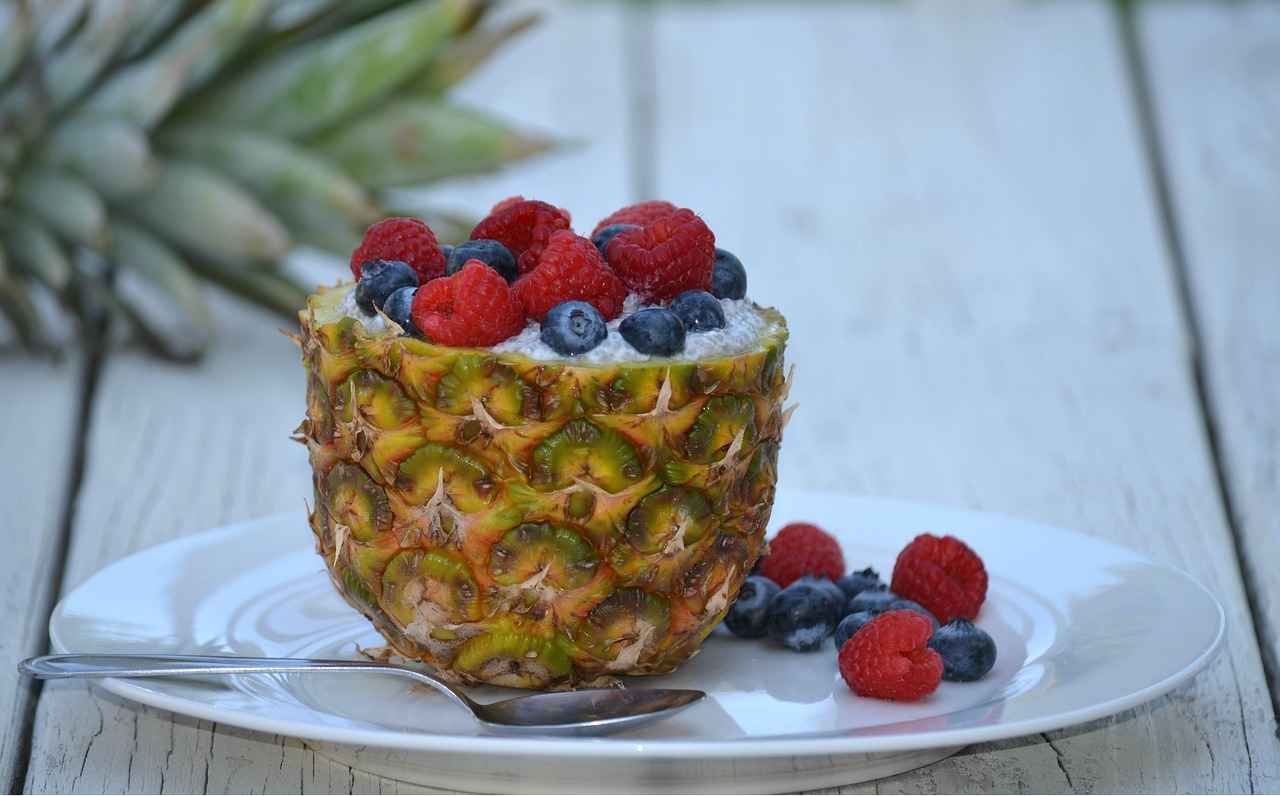
Where to Buy Quality Chia Seeds?
When it comes to incorporating chia seeds into your diet, finding high-quality chia seeds is crucial for maximizing their health benefits. These tiny seeds are not only packed with nutrients but also provide numerous advantages for those looking to improve their overall health and support weight loss efforts.
High-quality chia seeds are essential as they ensure that you receive the full spectrum of nutrients. Poor quality seeds may lack the vital omega-3 fatty acids, fiber, and antioxidants that make chia seeds a superfood. Moreover, inferior seeds may contain contaminants that can adversely affect your health.
Chia seeds can be found in various locations, making it convenient for consumers to incorporate them into their diets. Here are some popular places to buy quality chia seeds:
- Health Food Stores: Local health food stores often carry a variety of organic and non-organic chia seeds. Staff members can also provide valuable insights into the best products available.
- Supermarkets: Many supermarkets now have dedicated health food sections that include chia seeds. Look for brands that are well-reviewed and check the packaging for quality certifications.
- Online Retailers: Shopping online offers the widest selection of chia seeds. Websites like Amazon, Thrive Market, and specialty health food sites provide customer reviews and detailed product descriptions to help you make informed decisions.
When purchasing chia seeds, consider the following factors to ensure you’re getting the best quality:
- Organic Certification: Opting for organic chia seeds can help you avoid pesticides and harmful chemicals. Always look for certifications on the packaging.
- Packaging: Choose seeds that are packaged in airtight containers to maintain freshness. Exposure to air can diminish their nutritional value.
- Brand Reputation: Research brands before making a purchase. Look for companies with positive reviews and transparent sourcing practices.
Chia seeds come in various forms, including:
- Black Chia Seeds: The most common type, rich in nutrients and widely available.
- White Chia Seeds: Slightly less common, these seeds have similar nutritional profiles but may be perceived as more aesthetically pleasing in dishes.
While there are many brands available, here are a few that consistently receive high marks for quality:
- Nutiva: Known for its organic chia seeds, Nutiva is a trusted brand among health enthusiasts.
- Terrasoul Superfoods: Offers high-quality, organic chia seeds that are well-reviewed for their freshness and taste.
- Bob’s Red Mill: A reputable brand that provides a variety of health foods, including quality chia seeds.
In summary, purchasing high-quality chia seeds is vital for reaping their numerous health benefits. By exploring various purchasing options, evaluating quality factors, and considering reputable brands, you can confidently add this superfood to your diet. Remember, the right chia seeds can significantly enhance your health journey and support your weight loss goals.
Organic vs. Non-Organic Chia Seeds
When it comes to choosing chia seeds, one of the most significant decisions is whether to opt for organic or non-organic varieties. This choice can greatly impact your health and the environment. In this section, we will delve into the differences between organic and non-organic chia seeds, helping you make an informed decision.
Organic chia seeds are cultivated without the use of synthetic pesticides, herbicides, or fertilizers. They are grown in compliance with strict organic farming standards, which promote sustainable agricultural practices. This means that when you choose organic chia seeds, you are not only prioritizing your health but also supporting environmentally friendly farming.
- Free from Harmful Chemicals: Organic chia seeds are grown without harmful chemicals, ensuring that your body is not exposed to pesticides and other toxic substances.
- Better Nutritional Profile: Some studies suggest that organic seeds may have a higher nutrient content, including more antioxidants and omega-3 fatty acids.
- Support for Sustainable Farming: By purchasing organic products, you contribute to sustainable farming practices that protect the environment and promote biodiversity.
When shopping for organic chia seeds, it’s essential to look for certifications that confirm their organic status. Here are some tips:
- Check for USDA Organic Certification or equivalent.
- Read labels carefully to ensure there are no added ingredients.
- Look for brands that prioritize transparency and sustainability.
Non-organic chia seeds are often produced using conventional farming methods, which may involve the use of synthetic pesticides and fertilizers. While they may be less expensive than their organic counterparts, they can come with potential health risks.
- Pesticide Exposure: Regular consumption of non-organic seeds may lead to pesticide accumulation in the body, which can have long-term health implications.
- Environmental Concerns: Non-organic farming practices can contribute to soil degradation, water pollution, and loss of biodiversity.
Generally, there is no significant difference in taste or texture between organic and non-organic chia seeds. Both varieties have a mild, nutty flavor and a similar texture when soaked in liquid. However, many consumers report a preference for the taste of organic seeds, likely due to their cleaner growing conditions.
Regardless of whether you choose organic or non-organic chia seeds, incorporating them into your diet is easy. Here are some popular methods:
- Add chia seeds to smoothies for a nutrient boost.
- Mix them into yogurt or oatmeal for added texture and nutrition.
- Make chia seed pudding by soaking them in milk or a milk alternative.
Ultimately, the choice between organic and non-organic chia seeds depends on your personal values and health goals. While organic chia seeds offer numerous benefits, non-organic seeds can still be a nutritious addition to your diet if organic options are not available. Always prioritize quality and look for reputable brands to ensure you are getting the best possible product.
Brands to Consider
When it comes to purchasing chia seeds, selecting the right brand is crucial for ensuring that you receive a product that is both high-quality and beneficial for your health. With a plethora of options available in the market, it can be overwhelming to navigate through the choices. Here, we will explore several reputable brands that are known for their premium chia seeds, along with tips on how to choose the best option for your needs.
Investing in high-quality chia seeds is essential for maximizing their health benefits. Quality seeds are not only more nutritious but also free from harmful additives and contaminants. Therefore, understanding what to look for in a brand is vital.
- Nutiva – Known for its organic and non-GMO products, Nutiva offers chia seeds that are rich in nutrients and sourced from sustainable farms.
- Terrasoul Superfoods – This brand provides high-quality, raw chia seeds that are rich in omega-3 fatty acids and packed with antioxidants.
- Healthworks – Healthworks chia seeds are certified organic and come in a resealable bag for convenience. They are praised for their freshness and quality.
- Bob’s Red Mill – A well-known brand in the health food industry, Bob’s Red Mill offers chia seeds that are gluten-free and non-GMO, making them a safe choice for many diets.
- Viva Naturals – This brand focuses on organic and premium ingredients, providing chia seeds that are nutrient-dense and harvested from the best sources.
When selecting a brand, consider the following factors:
- Organic Certification: Look for brands that offer organic chia seeds, as they are less likely to contain pesticides and chemicals.
- Reviews and Ratings: Research customer reviews and ratings to gauge the quality and taste of the seeds.
- Sourcing and Transparency: Brands that provide information about their sourcing practices are often more trustworthy.
- Packaging: Opt for brands that use resealable and opaque packaging to maintain freshness and protect against light exposure.
You can find high-quality chia seeds in various places:
- Health Food Stores: Local health food stores often carry reputable brands of chia seeds.
- Online Retailers: Websites like Amazon and the brands’ official sites usually offer a wide selection, often at competitive prices.
- Supermarkets: Many supermarkets now have a health food section where you can find organic chia seeds.
Choosing the right brand of chia seeds can significantly impact your health journey. By considering factors such as organic certification, customer reviews, and sourcing practices, you can make an informed decision. Remember, investing in quality chia seeds is a step towards enhancing your overall health and promoting weight loss.
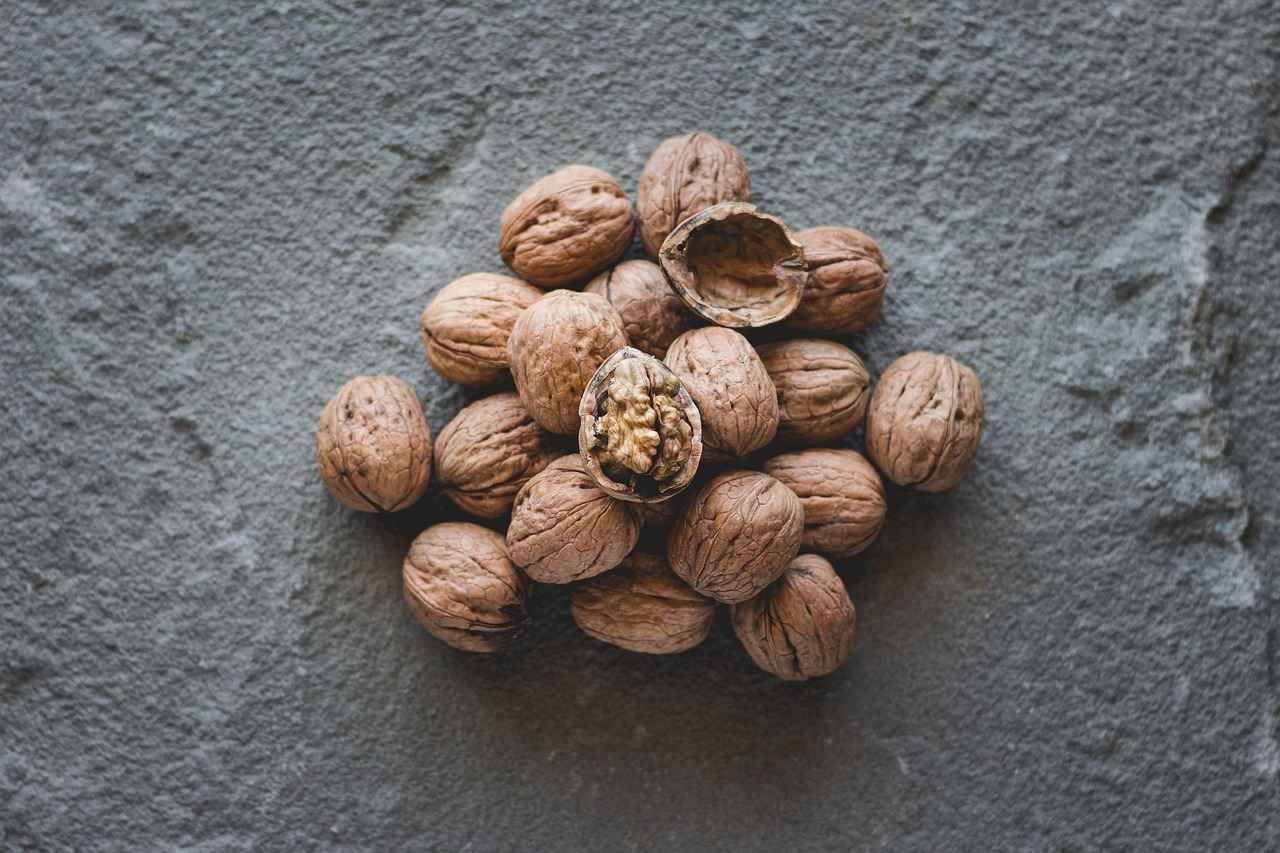
Final Thoughts on Chia Seeds for Weight Loss
Chia seeds have emerged as a nutrient-dense superfood that can significantly aid in weight loss. Their unique composition of fiber, protein, and healthy fats makes them an excellent addition to any weight management plan. Understanding the multitude of benefits chia seeds offer can empower individuals to make informed dietary choices that enhance their overall health.
Why Are Chia Seeds Considered a Superfood?
Chia seeds are derived from the Salvia hispanica plant and are known for their exceptional nutrient profile. They are rich in:
- Omega-3 fatty acids: Important for heart health and reducing inflammation.
- Antioxidants: Help combat oxidative stress and support metabolic processes.
- Vitamins and minerals: Essential for various bodily functions, including bone health and energy metabolism.
How Do Chia Seeds Help with Weight Loss?
The effectiveness of chia seeds in weight loss can be attributed to several factors:
- High Fiber Content: With approximately 11 grams of fiber per ounce, chia seeds promote feelings of fullness, which can help reduce overall calorie intake.
- Hydrophilic Properties: When soaked in liquid, chia seeds expand and form a gel-like substance, increasing satiety and prolonging digestion.
- Protein Source: Being a plant-based protein source, chia seeds contribute to muscle maintenance and can enhance feelings of fullness.
How Can You Incorporate Chia Seeds into Your Daily Diet?
Integrating chia seeds into your meals is simple and versatile. Here are a few practical suggestions:
- Chia Seed Pudding: Combine chia seeds with almond milk or yogurt, let it sit overnight, and enjoy a nutritious breakfast.
- Smoothies: Add a tablespoon of chia seeds to your smoothie for an extra nutrient boost. They not only add nutrition but also help thicken the smoothie.
- Baking: Incorporate chia seeds into baked goods like muffins or bread for added texture and nutrition.
Are There Any Precautions to Consider?
While chia seeds are generally safe for most individuals, it’s essential to consume them in moderation. Some may experience digestive discomfort if they consume too many at once. Always ensure you are drinking enough water, as chia seeds absorb liquid.
How Much Chia Seeds Should You Consume Daily?
The recommended daily intake of chia seeds is about 1-2 tablespoons. This amount provides a good balance of nutrients without excessive calorie intake. Adjusting your intake based on your activity level can also be beneficial, as more active individuals may require additional nutrients.
Where to Buy Quality Chia Seeds?
When purchasing chia seeds, opt for organic varieties whenever possible. This ensures that you are consuming seeds free from pesticides and harmful chemicals. They can be found in health food stores, supermarkets, and online retailers.
In conclusion, chia seeds are a powerful tool for anyone looking to manage their weight effectively. By incorporating these tiny seeds into your diet, you can enjoy their numerous health benefits while supporting your weight loss goals. Their versatility and nutrient density make them an excellent choice for enhancing your overall well-being.
Frequently Asked Questions
- What are the main benefits of chia seeds for weight loss?
Chia seeds are packed with fiber, protein, and healthy fats, which help increase feelings of fullness, reduce appetite, and support overall weight management.
- How can I incorporate chia seeds into my daily diet?
You can easily add chia seeds to smoothies, yogurt, or oatmeal. They also make a delicious chia seed pudding when mixed with milk or a milk alternative.
- Are there any side effects of consuming chia seeds?
While generally safe, some people may experience digestive issues like bloating or gas. It’s best to start with small amounts and increase gradually.
- How much chia seeds should I consume each day?
A typical recommendation is 1-2 tablespoons per day. However, you may adjust this based on your activity level and dietary needs.
- Where can I buy quality chia seeds?
You can find chia seeds at health food stores, supermarkets, or online. Look for organic options to ensure they are free from harmful chemicals.
